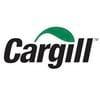Implications for finishing house efficiency of growth rate variability from weaning to sale weight
Published: July 29, 2025
Source : J. Richardson 1,* / 1 Production Performance Services Ltd, Huntingdon, United Kingdom.
Summary
Keywords: Efficiency, profitability, Variability
Introduction:
Variability of post-weaning growth can result in either an increase in the sale of lighter-weight pigs or an extended finishing period. This poses management challenges as to what is the optimal strategy for de-stocking finishing buildings in order to produce the optimal financial return per finishing pig place.
Materials and Methods:
An 1800-finisher pig place straw-bedded, naturally ventilated (ACNV) house managed on an all in-all out basis comprising 20 pens was used to house pens of 90 gilts or boars on a split-sex basis. Pigs entered at approximately 53kg and were sold at 112kg live weight. Pigs were fed ad libitum; 2 sample pens were weight monitored at weaning, on entry, and at weekly intervals for the last 8 weeks of the finishing period.
Results:
Weaning weight at 24-28 days of age had a mean weight of 7.39kg (3.08-12.7kg) SD 1.6kg and 22% coefficient of variation. At entry to finishing at 104 days of age and a mean weight of 54.4kg (29.5-86.5kg) SD 8.1Kg CV 14.9%. First sales draw (5.5% of pigs) was at 139 days of age when the overall house mean pig weight was 91.6kg (58.5-122.5kg) SD 10.1kg, CV 11.0%.
At draw 4, 68% of pigs had been sold at a mean live weight of 111.7kg; the residual 562 pigs (32%) then had a mean live weight of 99kg. These pigs were sold in 4 further successive weekly draws of 17%, 11%, 3 and 1.5% of the total pigs with mean live weights of 111.6, 110.9, 108.4 and 106.2kg respectively. If all of the pigs had been sold at draw 4 then the house could have been re-stocked 4 weeks sooner thus improving housing efficiency but with the penalty of reduced full-value pigs being sold. Use of a spreadsheet incorporating all production costs and sales revenues enabled the most efficient return / pig place to be determined. If all pigs were sold at or before draw 2 a reduced margin of -£4.79 pig place / year occurred due to not optimising sale weight. Selling all pigs prior to, or at draw 5, an additional margin of £13544 / year, £2597 / batch (£1.48 / pig) or £7.52 per pig place per annum could be achieved. This being the most profitable outcome.
Conclusion:
Variability of pig weight and growth performance is an inevitable part of pig production. Efficient pig production requires such variability to be managed in order to maximise housing efficiency and margin / pig place / annum. Knowledge of variation and variable factors such as costs of production and market prices enables the optimal number of weekly sales draws to be identified. The optimal number of sales draws is not fixed and will vary in accordance with relative changes in the above factors.
Disclosure of Interest: J. Richardson Conflict with: Consultant.
Published in the proceedings of the International Pig Veterinary Society Congress – IPVS2016. For information on the event, past and future editions, check out https://www.theipvs.com/future-congresses/.
Content from the event:
Related topics:
Recommend
Comment
Share

Would you like to discuss another topic? Create a new post to engage with experts in the community.









